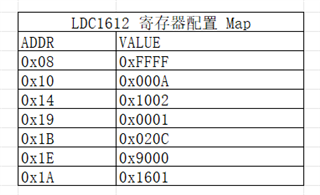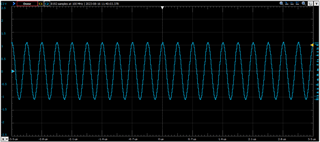Some questions about LDC1612 register configuration.
I want to use a function like this:
1. Only use CH0;
2. Full precision conversion time;
3. The INTB Pin generates a falling edge interrupt when the conversion is complete;
My register configuration is as follows:

Are there any questions ?




